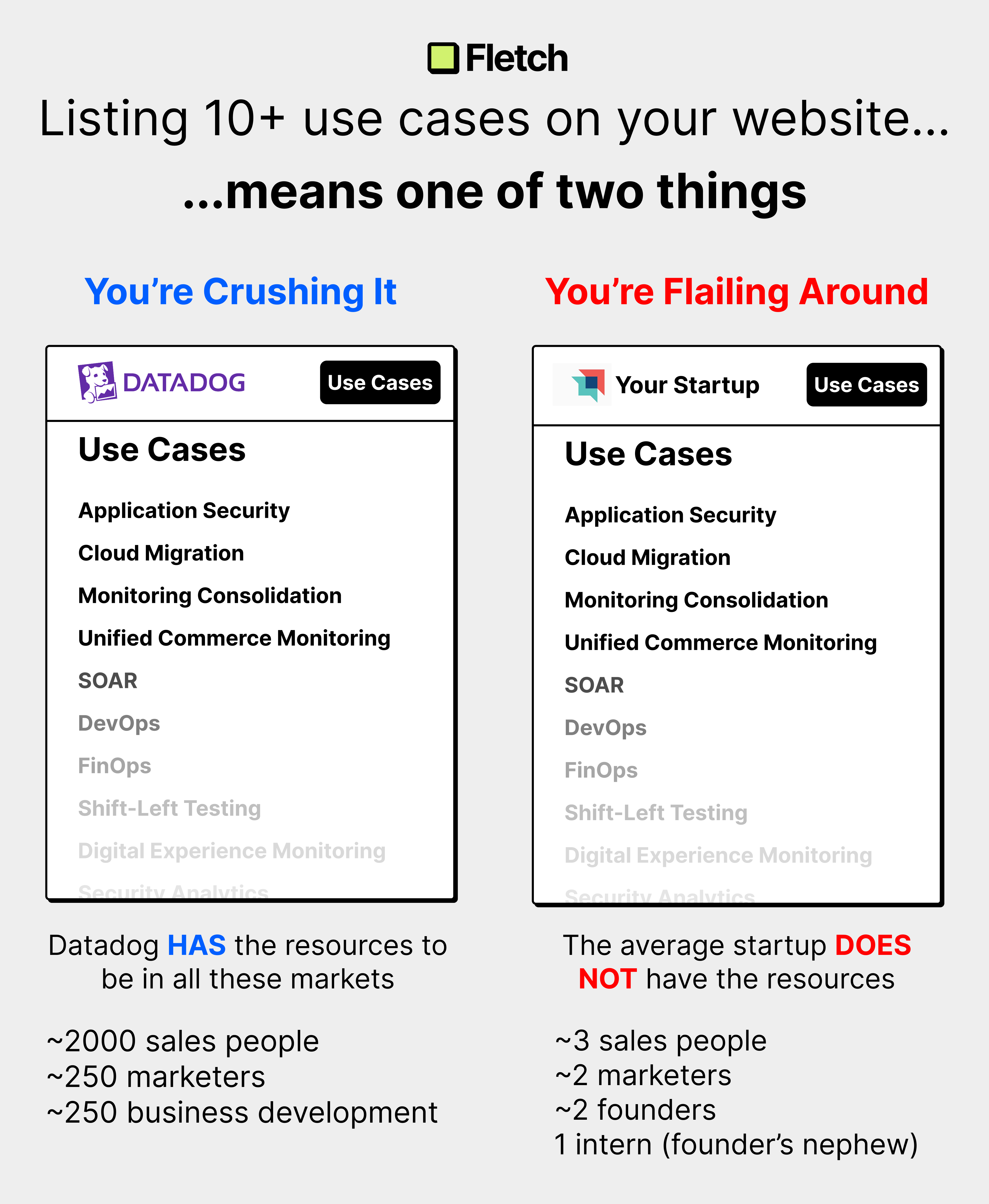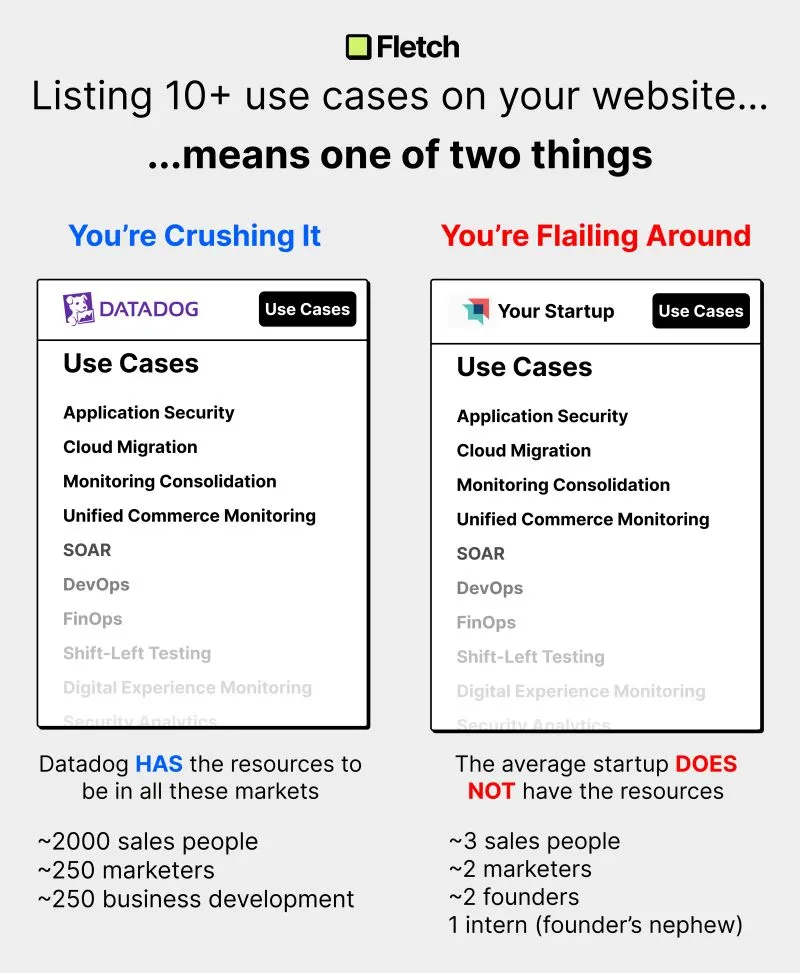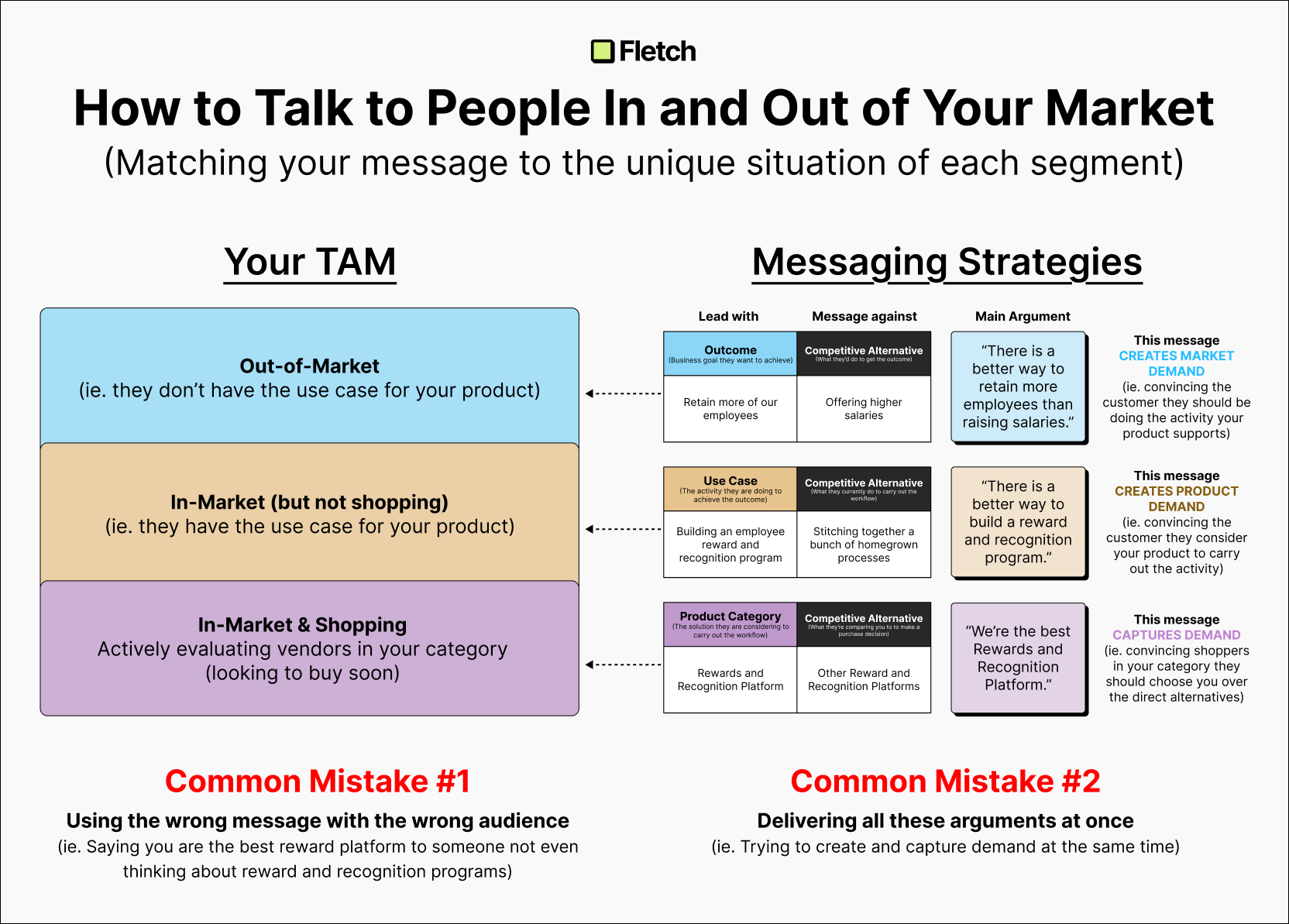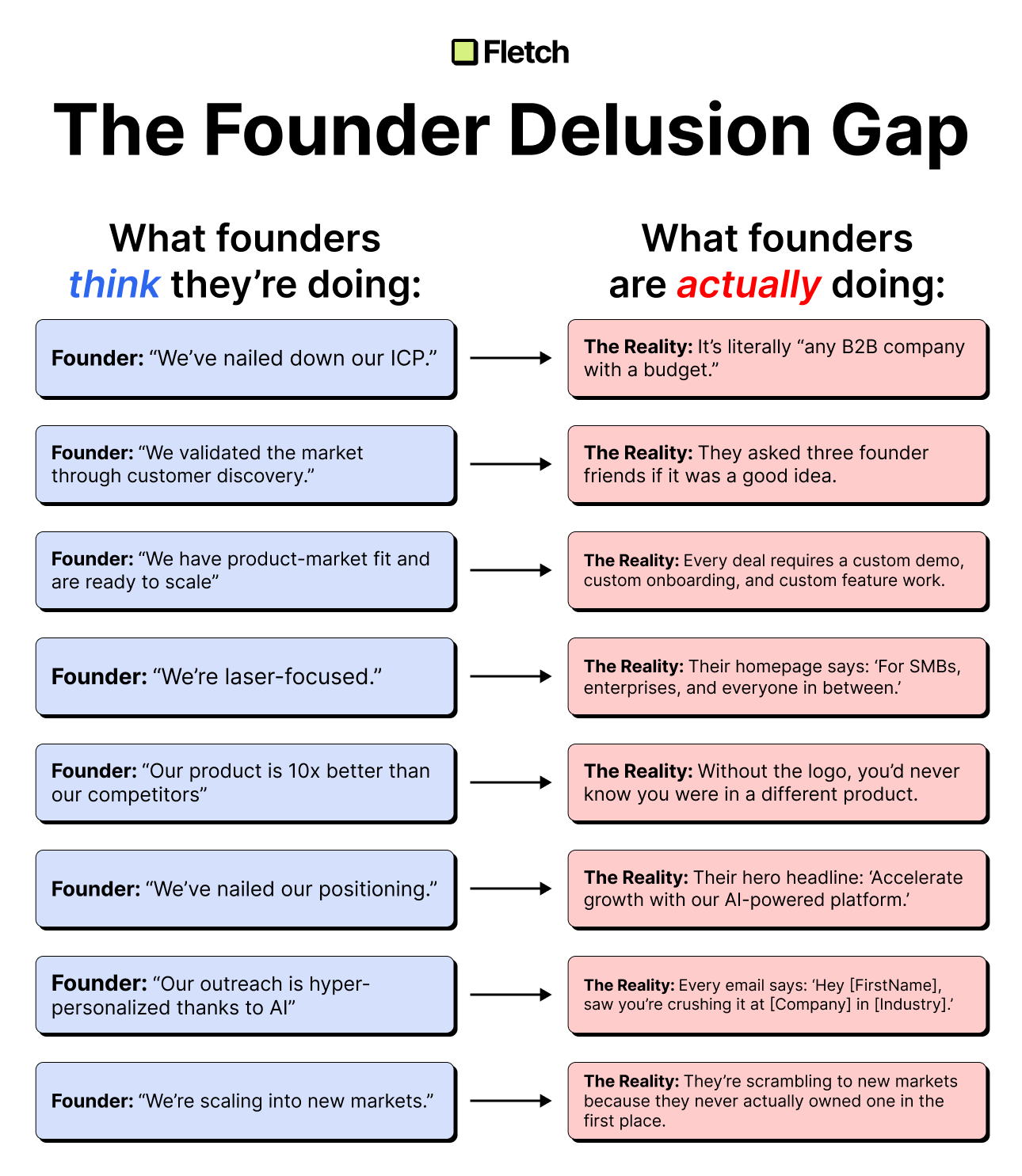Listing 10+ use cases on your website…means one of two things


When I see a startup website with 10+ use case pages, I immediately think one of two things…
🎉 It’s a signal of success
They’ve truly hit PMF and are layering on additional market segments.
They have the revenue and headcount to actually execute the required marketing and sales programs for each use case.
(see Datadog example)
😩 It’s a signal of struggle
They’re flailing.
No single wedge is working, so they’re writing a new use case page every week hoping one will stick.
The same website on the surface.
Completely different story under the hood.
And your prospects will pick up on this quickly — eroding the needed trust to win deals.
———
This leaves these flailing startups with a couple of choices with their website (and their overall positioning)
🔵 Option 1 - Stay broad and keep all the use cases
This can be a viable strategy ONLY IF you understand that it is a temporary experimentation approach.
The key here is making sure you don’t stay in this mode for tool long, or else your company will get pulled apart by the ambiguity.
🔵 Option 2 - Pick a wedge and double down
Choose the use case you’ve seen the most tracation (not the one you wish was working).
And build your messaging and GTM programs around that first.
The idea here is to align your resources to match the scope of your market
(ie. you can actually show up in all the channels and iterate on the tactical execution for that audience consistently)
Remember, it takes time to get even a single use case positioning to work.

Ben Wilentz
Founder, Stealth Startup




